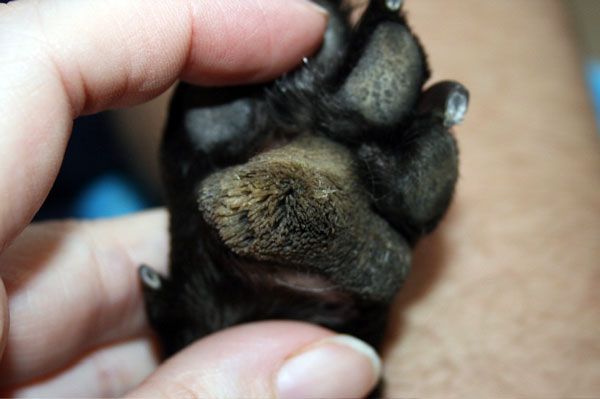Dog Paw Pads Problems And Solutions
I anticipate closing this website and completing a full transition to my substack account by the end of the year. Please sign up for the substack newsletter if you wish to stay informed about things going on at Yankee Shelties.
You can also find a link to book grooming/boarding service there. Or just bookmark the customer log in page to your "favorites" list
The pads of a sheltie’s feet are meant to handle walking on a myriad of surfaces. Because of this they will eventually toughen up from the sweet, soft pads of puppyhood. They eventually become the workhorse of the dog body.
Unfortunately, most people feel this means the pads never have any situations that they cannot handle. This is so very untrue.
I have seen some really stupid people take their dogs out on a hike in Arizona on a hot summer day. Aside from the possible heatstroke, they end up with dog paw pads burnt and ripped off with the feet a bloody mess.
Use common sense.
Aside from obvious stupidity, normal everyday situations can accidently cause a laceration or infection of the dog paw pads. As careful as you may be with your sheltie, one cannot go through life unscathed.
S**T happens.
So better to just expect the unexpected from time to time.
Here's How To Handle Most Dog Paw Problems
Wash the pad and foot off well to remove any dirt, grime or other foreign objects. You can use soap and water or normal saline solution. Either put the foot in a small basin and swish it around to loosen anything stuck in the pad, or get a syringe (without the needle!!) and fill with the washing solution.
Then squirt that into the crevice or other area of injury. Do this until you feel the area is clean.
Soak in a basin of dilute betadine (make it look like weak tea) and when you are sure you have gotten the area thoroughly wet, take the paw out and let it air dry with the betadine on the injury.
Take a small amount of gauze wrap, followed by some stretchy adhesive vet wrap and cover the wound. DO NOT make the wrap too tight. You can cut off the circulation and then nothing will heal. Make it just snug enough to keep the wrap on.
Leave it on for two or three days. Remove the wrap, wash again with soap and water, followed by weak betadine solution then let it air dry. Hopefully those few days will be enough to make sure there is no infection started and for healing to start.
It may take a while to heal completely.
What Are Dog Paw Pads Made Of?
The interesting thing is that dog pad cells grow vertically, not horizontally like our skin does, so when there is a vertical cut into the pad it takes a while to heal since the cells don't grow over the cut.
The vertical cells can also overgrow and the sheltie develops what is technically known as nasodigital hyperkeratosis. Fancy name for the cells on the nose or the digits (feet) over-grow and cause the dog paw pads "fuzzy foot".

Because the sheltie walks on the overgrown pad it lies flat and not until you brush against the grain do you notice the bristle-like extensions.
You can trim them or grind them off without any pain. The apply vitamin E and rub it in.
There are exfoliating creams to prevent regrowth but they usually contain salicylic acid as the active ingredient which you don’t want the sheltie ingesting, so I would advise avoiding them.
Finally, there is good ol’ bag balm or pad & elbow cream for everyday maintenance. Both work at reducing cracks, keeping the pads supple without being too soft. I am, as always on the lookout for a better product.
A Fungus Among Us
In addition to cracked injured pads, dogs can easily develop a fungus or yeast infection. It causes the hair between the pads to turn red (like the tear stains under white dogs’ eyes) and the smell of Fritos.
Which makes me wonder what’s in Fritos that smells so much like a fungus… Don’t think I can ever eat them again….
Anyway…
Easiest thing is to use an antifungal foot powder for humans. Fungus likes warm, moist, dark places. If you use powder, that effectively takes away the “moist” part of the equation. Just work it in well between the paw pads. My dogs seem to have no inclination to lick it off.

